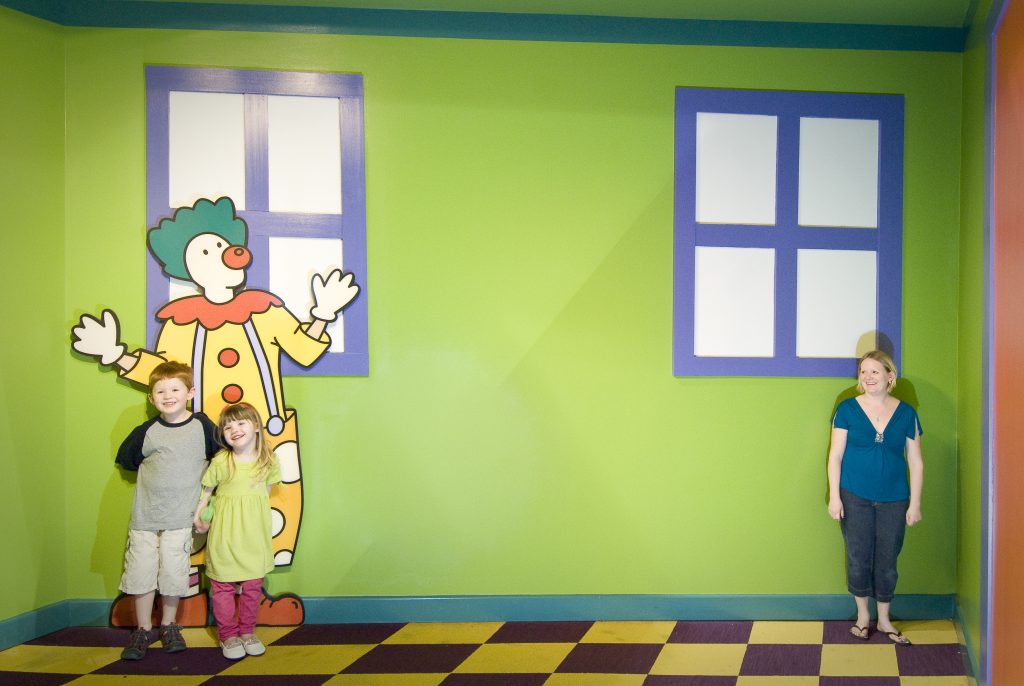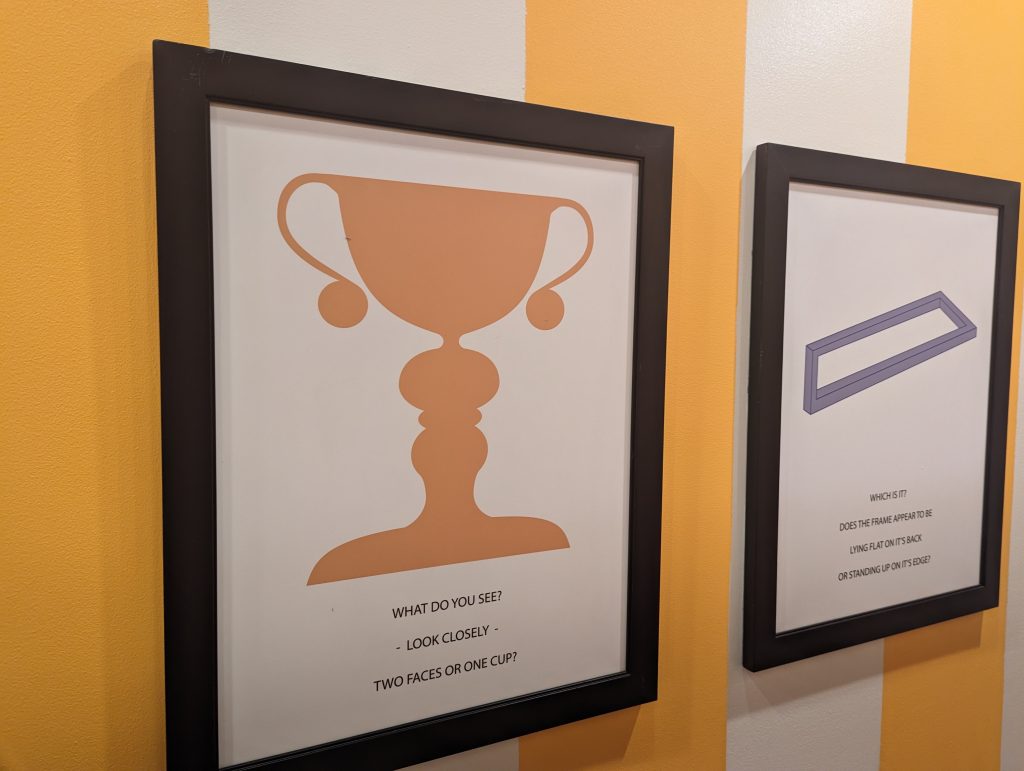Ames Rooms and Other Amazing Optical Illusions
April 3, 2023
Optical illusions have always fascinated people, and the Ames Room is no exception. The Ames Room is a distorted room that creates an optical illusion that makes people appear smaller or larger than they really are. It is named after its creator, American ophthalmologist Adelbert Ames Jr., who designed it in 1946.

The Ames Room illusion works by manipulating the viewer’s depth perception. The room is shaped like a trapezoid with the back wall shorter than the front wall, and the ceiling and floor are angled. From the front view, the room appears to be a normal rectangular shape, but in reality, it is not. The person standing on the far end of the room appears much smaller than the person standing close to the viewer, creating the illusion of an unequal size.

Another famous optical illusion is the Rubin vase, which is an example of a figure-ground illusion. The Rubin vase is a drawing that appears to show a vase or two faces, depending on how you look at it. It was first described by Danish psychologist Edgar Rubin in 1915.
Optical illusions like these can be used in various fields, including entertainment, psychology, and even filmmaking. Filmmakers often use optical illusions to create special effects in movies. For example, the Ames Room illusion was used in the movie “The Lord of the Rings” to create the illusion of characters being different sizes.
In conclusion, optical illusions like the Ames Room and Rubin vase have fascinated people for decades. They provide a glimpse into the complex workings of the human brain and how it processes visual information. Whether used for entertainment or scientific research, optical illusions will continue to captivate and intrigue people for years to come. You can actually see an Ames Room, Tilt Room, Rubin Vase and lots of other fun optical illusions in The A-Maze-N FunHouse at EnterTRAINment Junction.

 Tickets
Tickets Parties
Parties Shop
Shop Directions
Directions